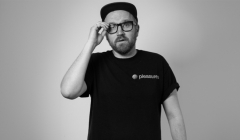
Creativity in 2025: Smaller, sharper, and a little less purposeful
Scott Dimbleby strives for a year of embracing fun and humour to offer audiences escapism.

The effectiveness of relating your company to the past

Marketing is at its most effective when a brand can make an emotional connection with its audience – and what better way than to connect through the memories of our childhoods. From the slushy machine at the cinema to retro music and our favourite childhood sweets, we all love talking about the past – and brands have found a way to do this effectively.
Nostalgia triggers emotional responses to familiar sounds, sights, and smells from our childhoods. It reminds us of a simpler, less stressful time. Whether it is school discos or our favourite cartoons, our long-forgotten favourites can be brought back to us.
Nostalgia works by reminding us of ourselves at a different time and letting us reflect on this past
Peter Campbell, Snowshock
Marketing in this way bring back themes and styles from people’s childhoods to provoke an emotional reaction. Companies such as McDonalds, Coca Cola, and Nintendo have all used nostalgia marketing within their strategies to great effect.
Whether it be reminders of a moment in history linked to a certain TV show or childhood food, these cultural memories trigger the emotions of your customers by reminding them of a past, whether lived or not.
Audience and era
When attempting nostalgia marketing, you will want to find the right audience for you. Whether your audience is mostly Gen Z, millennials, or older, you will want to appeal to their childhood memories. As this will differ between generations, it is important to note down the age range of your clientele.
However, a safe bet for bringing nostalgia into your marketing is to target the 1990s, with the popular slogan “Only ‘90s kids would understand”. This time hints at comfort shows such as Friends and the Rugrats, as well as foods such as fish fingers and eggs and soldiers.
And for some, anything “retro” is a go. Gen Z jump in on the ‘90s trends, even though they didn’t experience the decade. They bring back ‘90s fashion and music idols. And with TV shows such as Stranger Things resurging the love for cassette players, music and the ‘80s, nostalgia and finding a history is an effective tool for grabbing an audience.
While you might not want to reference specific pop culture from the era, as this might be copyrighted, you can approach nostalgic marketing through colour, fonts, and themes. Think bold black outlines, jagged shapes, and bright, contrasting colours.
The ‘90s were bright and bold with colours which contrasted, inspired heavily by comic books and pop art. Using these colours and contrasts within your own marketing material can bring about this feeling of nostalgia for a past before the millennium.
And why not bring in your own story as nostalgic- where did your company start, why, and how far has it come? Other brands have used this to their advantage by exploring their past and bringing back old logos, such as Coca Cola and more.
This dive into the past of your company can be advantageous for your brand authenticity – letting your customers know the true business, your purpose, and the journey your company has been on so far. Gen Z and millennial customers prefer brands who share their values, and by exploring the story of your company customers can identify closer with your brand.
Nostalgia works by reminding us of ourselves at a different time and letting us reflect on this past – or even for many in generation Z, it tells them of how the world, and their parents, were before this moment. Being able to relate your company to this past can draw on the emotions of your customers and it is these emotions which makes the marketing so effective.
In 1997 professional salesman Peter Campbell saw a tiny advert in his local newspaper looking for an agent to sell frozen drinks in the North East of England, he liked the idea and took it up. Campbell started Snowshock in 2003. He didn’t let the fact he had no money to invest stop him, he begged and borrowed his start up funds and found a friendly bank manager. By 2009 Snowshock Slush was a nationwide brand and by 2011 Snowshock was the preferred, authorised supplier to the majority of the UK’s convenience stores including Nisa, Costcutter and Londis, today supplying upwards of 4000 customers, sales are approaching £4.5m.
Looks like you need to create a Creativebrief account to perform this action.
Create account Sign inLooks like you need to create a Creativebrief account to perform this action.
Create account Sign in